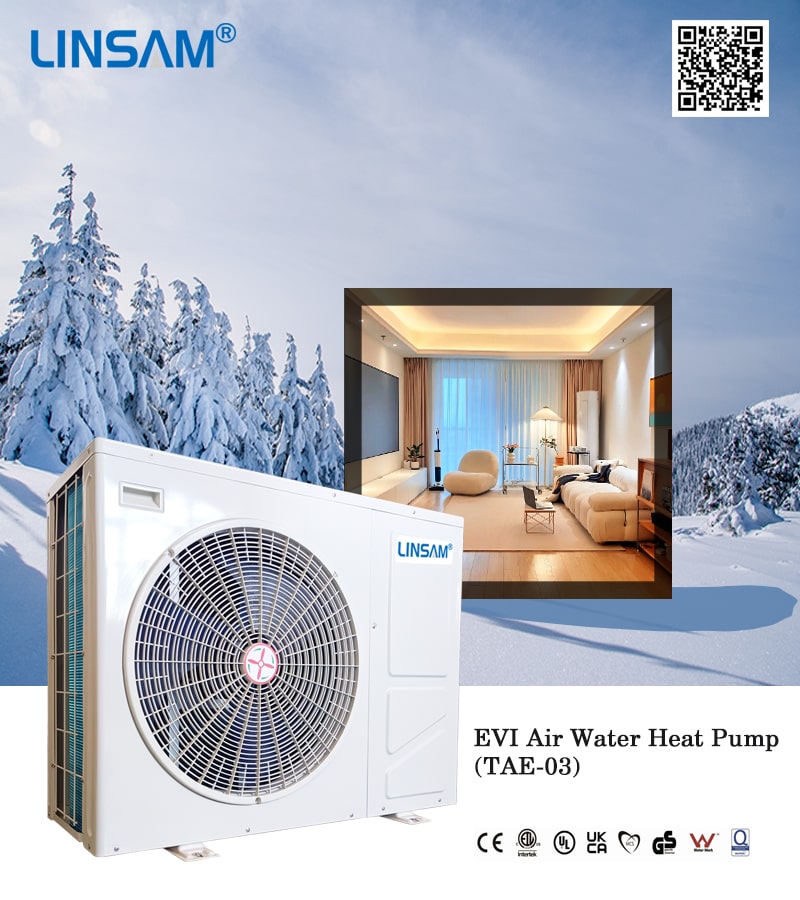Be cautious! These incorrect operations can easily result in the freezing and cracking of air source heat pumps. The insulation and anti-freezing measures for air source heat pump units in winter are crucial, as even slight negligence can lead to direct economic losses for users, and even more serious consequences. In this article, we interviewed several technical directors and distributors from manufacturers to compile their viewpoints and opinions.
I. Causes of freezing and cracking of air source heat pumps:
Prolonged power outage for the unit:
When the temperature drops below -5°C, if the power outage lasts for more than 4 hours, it is likely to cause freezing and cracking of the heat exchanger. Especially when both the refrigerant circuit and water circuit freeze, when the power is restored and the compressor restarts, the compressor will directly suck in the water from the outside water circuit into the refrigerant system, resulting in the entire unit being scrapped. Therefore, when a prolonged power outage is anticipated, it is necessary to drain all the water from the unit, water pump, and outdoor piping to prevent the unit from freezing and being damaged.
Lack of anti-freezing protection function in the unit’s mainboard design:
When the temperature drops below zero degrees Celsius, as long as the unit is in the powered-on state, regardless of whether the unit is in operation or reporting error codes, the unit will automatically supply power to the circulation pump for 10 to 15 seconds every 30 minutes. This circulates the hot water in the water tank between the tank and the main unit, utilizing the hot water in the tank to heat the valves, pipes, water pumps, and unit heat exchangers to prevent icing and cracking. However, the design of each manufacturer’s machine is different, and some machines may not have anti-freezing protection functions in their mainboards. Once a malfunction occurs, it may cause freezing and cracking of the heat exchange pipes.
Water flow switch or short circuiting of the water flow switch, along with inaccurate temperature probe measurement:
During summer cooling, when the water temperature reaches 10°C, the unit stops working, and it starts working when the water temperature exceeds 15°C. If the temperature probe does not accurately measure the water temperature, for example, if the water temperature has already reached 0°C but the probe still shows a temperature of 25°C (exceeding 15°C), the machine will determine that the water temperature has not reached the temperature required for shutdown and will continue cooling. At this time, if there is no water flow switch installed or the water flow switch is short-circuited, it may cause the unit to freeze and crack.
II. Anti-freezing measures for air source heat pumps in winter:
Strengthen the insulation of pipelines:
Pipe insulation is very important, as exposed water pipes will cool down as the external temperature drops.
Avoid power outages for the unit:
Air source heat pumps in water systems use water as an intermediate medium for heat transfer. Normally, the equipment has anti-freezing functions, and when the water temperature drops to a certain level, the equipment will automatically start to prevent the equipment and pipelines from freezing.
Properly handle condensate water:
During the heating process of air source heat pumps, a large amount of condensate water is discharged. If there is any negligence in the discharge of condensate water, it may flow onto the ground and freeze when the temperature is below zero degrees Celsius. This can block the drainage pipe, causing the water to rise along the pipe and eventually lead to the equipment’s malfunction. Regular cleaning of condensate water is necessary.
Add ethanol alcohol to the system water solution:
Adding ethanol alcohol with a concentration of 90% or above to the system can increase its anti-freezing properties. The amount to be added depends on the local minimum temperature. For example, adding 1 kg of alcohol to 100 liters of water will give an anti-freezing index of -1°C, and adding 5 kg of alcohol will give an anti-freezing index of -5°C. When using ethanol for anti-freezing, the amount should not exceed 40% of the total water volume in the system.
Add anti-freeze fluid to the system:
Adding anti-freeze fluids with temperatures such as -15°C or -25°C is an option, but it may increase the initial investment cost due to the higher price of these fluids. When using anti-freeze fluids, it is important to avoid using cheap ones, such as methanol-blended anti-freeze fluids, as they can corrode pipes and cause significant damage to valves, fittings, water pumps, and unit heat exchangers.

